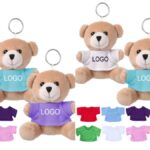Introduction to the use of
Language is a living, breathing entity that evolves over time. One of the fascinating aspects of English is how it handles singular and plural forms. Take the simple words item and items, for example. They might seem straightforward at first glance, but mastering their usage can elevate your writing to new heights. Whether you’re crafting a report, drafting an email, or simply engaging in casual conversation, knowing when to use each form can make all the difference. Let’s dive into this essential aspect of language and explore how you can confidently navigate between “item” and “items.”
Understanding singular and plural forms
Singular and plural forms are fundamental to English grammar. The distinction is simple yet essential for clear communication.
The term “item” refers to one individual object or concept. For example, you might say, “I need a specific item from the store.” Here, it highlights just one thing.
On the other hand, “items” indicates multiple objects or concepts. When you say, “We have several items on sale,” it conveys that more than one product is available.
Recognizing when to use each form can change the meaning of your sentences significantly. Using them correctly helps prevent confusion in conversation and writing alike.
Understanding these differences not only enhances clarity but also enriches your language skills. The nuances in usage allow for precise expression in various contexts.
When to use
Understanding when to use “item” or “items” is essential for clear communication.
Use “item” when referring to a single object or concept. For example, “I need one item from the list.” This indicates that only one specific thing is required.
On the other hand, opt for “items” when discussing multiple objects or concepts. An example would be, “We have several items on sale today.” Here, it’s evident that more than one object is being addressed.
Context often dictates your choice as well. In formal writing and documentation, precision matters. If you’re detailing inventory in a store report, clarity between singular and plural forms enhances understanding.
Pay attention to surrounding words too. Words like ‘each’ suggest singularity while phrases such as ‘many’ indicate plurality. Adjusting based on context ensures effective communication every time you write about an item or items.
Examples of correct usage in sentences
Using “item” in a sentence is straightforward. For instance, you might say, “I found an interesting item at the thrift store.” Here, it refers to one specific object.
When speaking about multiple objects, you switch to “items.” For example: “She packed several items for her trip.” This indicates more than one piece being discussed.
Another way to use both terms correctly could be in a list: “The box contains an item of clothing and three kitchen items.” This clearly distinguishes between the singular and plural forms while keeping the context clear.
Remember that clarity is crucial. Using these words accurately enhances your communication. Whether you’re writing or speaking, knowing when to use each form elevates your language skills.
Common mistakes and how to avoid them
Many people confuse “item” and “items.” It’s a common pitfall. Remember, “item” refers to one thing, while “items” indicates more than one. Misusing these terms can lead to unclear communication.
Another mistake is using “item” in contexts where multiple things are involved. For example, saying “I have three item on my list” is incorrect. The correct form should be “three items.”
Watch out for context too. Sometimes, an informal setting might make it tempting to overlook grammar rules. But clarity matters regardless of the situation.
To avoid errors, practice identifying when you’re discussing single objects versus multiples. A quick mental check before writing or speaking can save you from confusion.
Reading your work aloud helps catch mistakes that might slip through unnoticed during silent proofreading sessions. Embrace this habit for clearer expression!
Tips for mastering the use of
To master the use of item and items, start by familiarizing yourself with their definitions. An “item” refers to a single object or thing, while “items” denotes multiple objects.
Practice makes perfect. Regularly engage in writing exercises that require you to switch between singular and plural forms.
Read widely across different genres. Pay attention to how authors use these terms in context. This will help reinforce your understanding.
Use flashcards for quick reference. Write down examples of sentences using both forms, making it easier to recall them when needed.
Don’t hesitate to seek feedback from peers or mentors on your usage. Constructive criticism can highlight areas for improvement that you might overlook.
Keep a list of common phrases where confusion often occurs and review them periodically. This approach builds confidence and solidifies your grasp on using “item” versus “items.”
Conclusion
Mastering the use of item and items, can significantly enhance your writing skills. Understanding when to switch between these forms is essential for clear communication.
Remember, “item” refers to a single unit, while “items” denotes multiple units. Keeping this distinction in mind will help you avoid common mistakes that could confuse readers.
Practice makes perfect. Pay attention to how these terms are used in various contexts, and don’t hesitate to seek feedback from others on your usage. With time and effort, you’ll find yourself using “item” and “items” confidently.
Embracing these tips will ensure that your writing remains precise and effective—qualities every great writer strives for.






